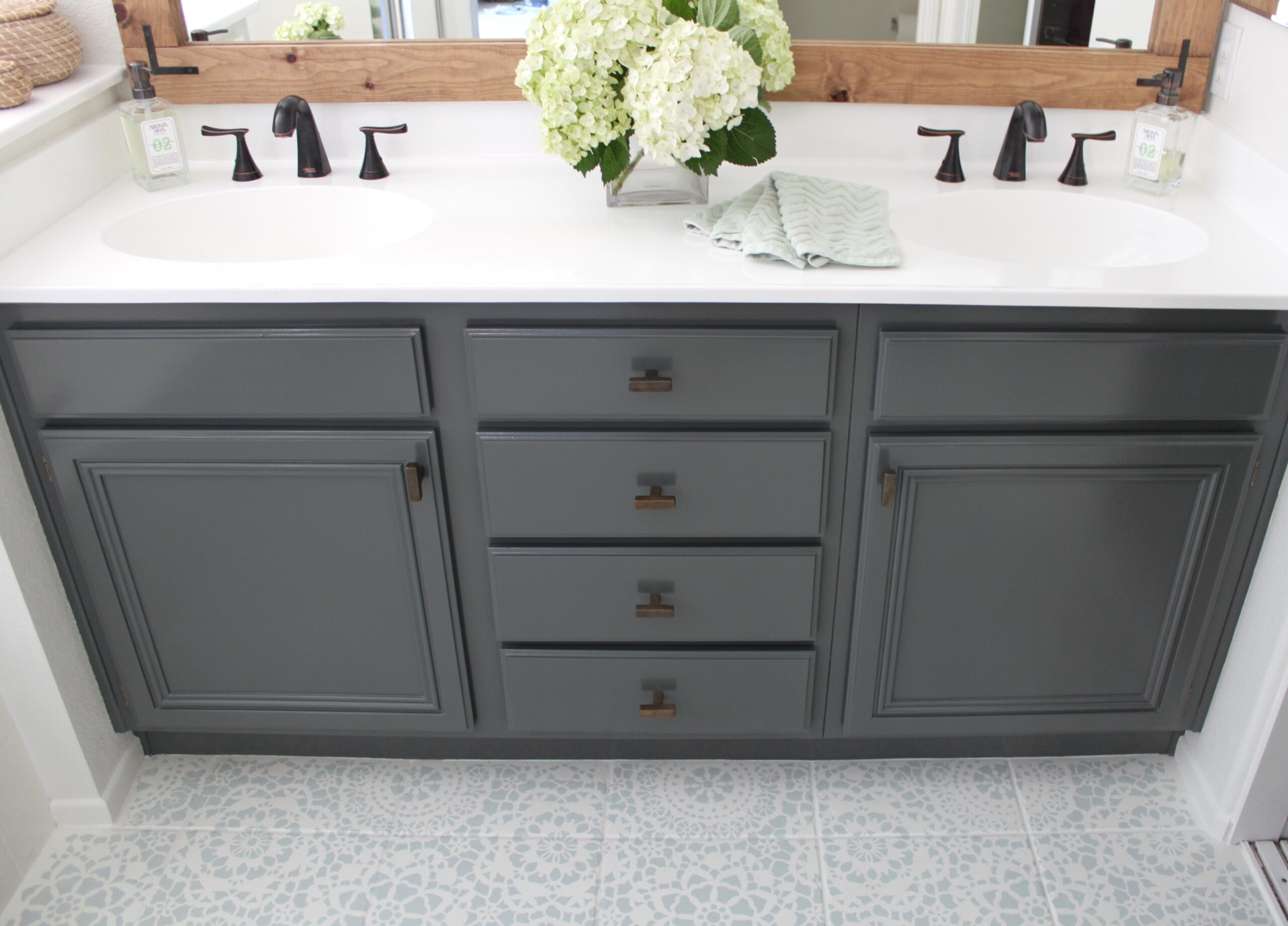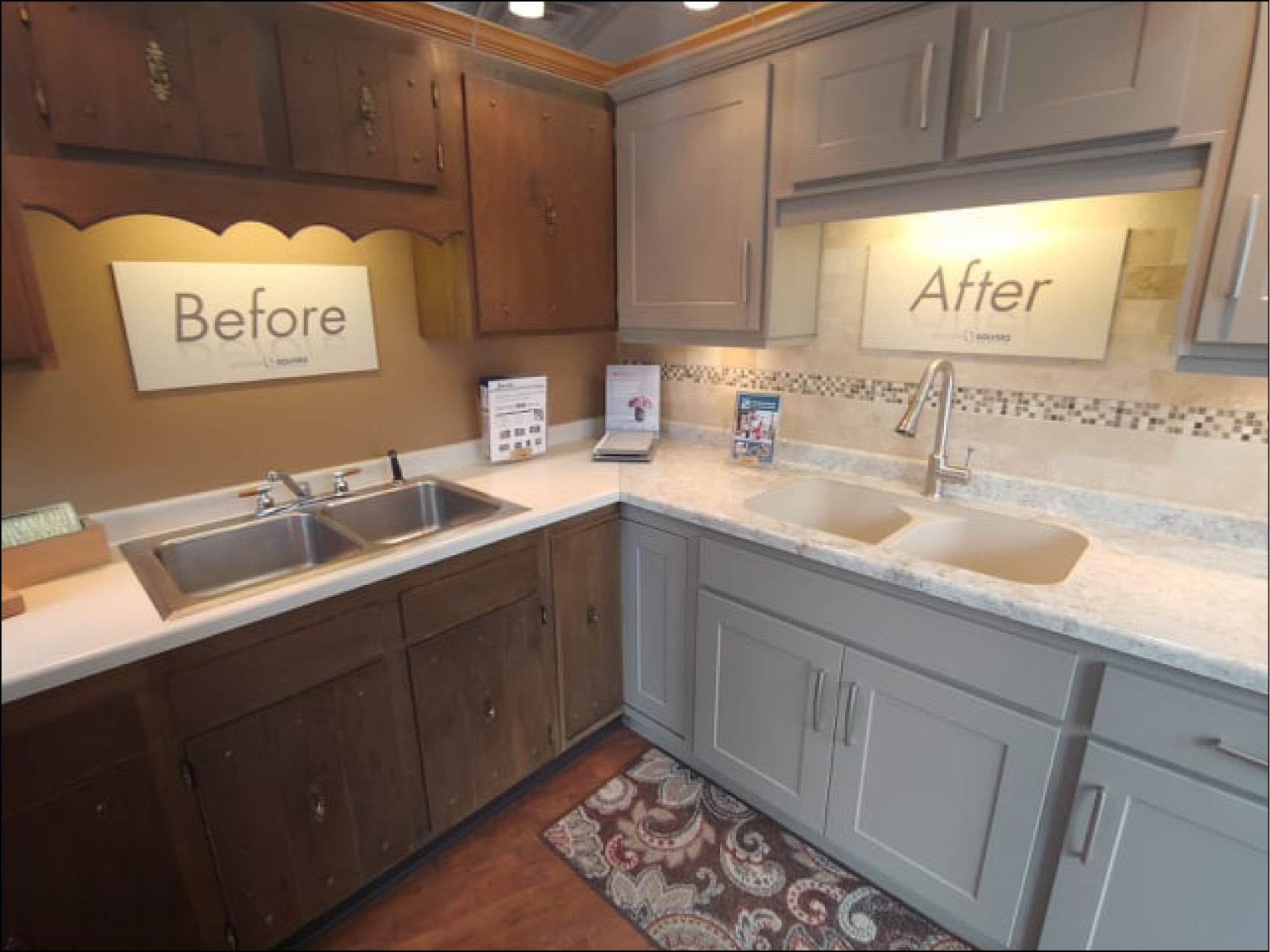Preparing for Your Bathroom Cabinet Refinish

Refinishing your bathroom cabinets can give your space a fresh, updated look. Before you start, it’s crucial to gather the necessary tools and materials and take the proper safety precautions. This will ensure a smooth and successful refinishing project.
Essential Tools and Materials
Having the right tools and materials on hand is essential for a successful cabinet refinishing project. Here’s a checklist of what you’ll need:
- Sandpaper: You’ll need a variety of grits, starting with coarse (80-120 grit) for removing old finish and smoothing rough surfaces, followed by medium (120-180 grit) for leveling, and fine (220-400 grit) for achieving a smooth finish.
- Sanding block: This helps to provide even pressure while sanding.
- Paint scraper: This is useful for removing loose paint or old finish.
- Putty knife: This is used for applying wood filler to imperfections.
- Wood filler: Use a wood filler that matches the color of your cabinets to fill any holes, cracks, or imperfections.
- Primer: A good quality primer helps to create a smooth surface for paint and ensures better adhesion.
- Paint: Choose a paint that is suitable for bathroom environments and offers good durability and moisture resistance.
- Paintbrushes: Select brushes with appropriate sizes for the different areas you’ll be painting.
- Paint roller: For larger areas, a roller will help you apply paint quickly and evenly.
- Paint tray: This will help you pour and store your paint.
- Drop cloths: Protect your floors and surrounding areas from paint splatters.
- Gloves: Wear gloves to protect your hands from paint and chemicals.
- Respirator mask: This is essential for protecting your lungs from dust and fumes.
- Safety glasses: Protect your eyes from flying debris and paint splatters.
- Cleaning supplies: You’ll need cleaning supplies like soap, water, and a sponge or cloth to clean the cabinets before and after refinishing.
Ventilation and Safety Precautions
Proper ventilation is crucial when working with paint and other chemicals. Open windows and doors to allow fresh air to circulate. If possible, work in a well-ventilated area, such as a garage or outside. Always wear a respirator mask to protect your lungs from dust and fumes. Safety glasses should also be worn to protect your eyes from paint splatters and flying debris.
Cleaning and Preparing the Cabinets
Before you start sanding, it’s important to clean the cabinets thoroughly. This removes any dirt, grease, or grime that could interfere with the paint’s adhesion.
- Remove hardware: Remove all cabinet doors, drawers, hinges, and knobs. This will allow you to sand and paint the cabinets more easily.
- Clean the cabinets: Use a mild soap and water solution to clean the cabinets. You can also use a degreaser to remove any stubborn stains or grease. Make sure to rinse the cabinets thoroughly with water and allow them to dry completely.
- Sand the cabinets: Start by sanding the cabinets with coarse-grit sandpaper to remove any old finish or imperfections. Move to medium-grit sandpaper to level the surface and finally, use fine-grit sandpaper to create a smooth finish. Sand in the direction of the wood grain for a consistent look.
- Fill imperfections: Use wood filler to fill any holes, cracks, or imperfections. Apply the filler with a putty knife and let it dry completely before sanding it smooth.
- Prime the cabinets: Apply a coat of primer to the cabinets. This will create a smooth surface for the paint and help to ensure better adhesion. Let the primer dry completely before moving on to the next step.
Choosing the Right Finish: Restaining Bathroom Cabinets Do Yourself

The finish you choose for your bathroom cabinets will play a significant role in their durability, moisture resistance, and overall appearance. The right finish can protect your cabinets from the harsh conditions of a bathroom environment, ensuring they stay beautiful for years to come.
Types of Paint Finishes
Different paint finishes offer unique properties, making it crucial to select the one that best suits your bathroom’s needs. Here’s a comparison of popular options:
- Oil-Based Paint: Known for its durability and excellent moisture resistance, oil-based paint is a popular choice for bathroom cabinets. It forms a hard, protective layer that can withstand frequent cleaning and exposure to humidity. However, it takes longer to dry and emits strong fumes, requiring adequate ventilation during application.
- Latex Paint: Latex paint offers a faster drying time and lower odor compared to oil-based paint. It’s also water-based, making cleanup easier. While it provides good moisture resistance, it may not be as durable as oil-based paint and may require more frequent touch-ups.
- Epoxy Paint: Epoxy paint is renowned for its exceptional durability and moisture resistance. It forms a hard, chemical-resistant coating that can withstand harsh cleaning agents and high humidity levels. However, it requires careful preparation and application, as it can be difficult to work with and may require a professional for optimal results.
Choosing the Right Color and Sheen
Selecting the right color and sheen for your bathroom cabinets can enhance the overall aesthetic appeal of your bathroom.
- Color: Consider the existing color scheme of your bathroom, the size of the space, and the desired ambiance. Light colors can make a small bathroom feel more spacious, while darker colors can create a more intimate atmosphere.
- Sheen: Sheen refers to the level of glossiness of the paint. A high-gloss finish reflects more light, making the cabinets appear brighter and more polished. It’s also easier to clean. A matte finish provides a more subtle, less reflective look, while a satin finish offers a balance between gloss and matte.
Applying the Finish

The moment of truth has arrived! After all your careful preparation, you’re ready to apply the finish to your bathroom cabinets. This is the most visible part of the process, and it’s where your hard work will truly pay off. With the right techniques and a steady hand, you can achieve a professional-looking finish that will transform your bathroom.
Applying Paint, Restaining bathroom cabinets do yourself
Painting your bathroom cabinets requires a systematic approach to ensure a smooth, even finish. Begin by cleaning the surface thoroughly to remove any dust or debris that could interfere with the paint’s adhesion. Once dry, apply a thin, even coat of primer to the cabinet surfaces. Primer acts as a bonding agent, helping the paint adhere better and creating a more uniform base for the finish.
After the primer has dried completely, it’s time to apply the paint. Start by carefully opening the paint can and stirring the contents thoroughly to ensure an even consistency. Dip your brush into the paint, making sure to remove any excess paint by wiping it along the rim of the can. This prevents drips and runs, ensuring a smooth and professional-looking finish.
When applying paint to the cabinet surfaces, use long, even strokes in the direction of the wood grain. This helps to create a smooth and uniform finish. Overlap each stroke by about 50% to ensure complete coverage. Work in small sections, and avoid going back over the same area multiple times. This can cause the paint to become uneven and streaky.
Multiple Coats
For a durable and long-lasting finish, applying multiple coats of paint is essential. Allow the first coat of paint to dry completely before applying the second coat. Drying time will vary depending on the type of paint and the ambient temperature. Refer to the manufacturer’s instructions for the recommended drying time.
After the first coat has dried, apply a second coat using the same technique as before. Make sure to cover any bare spots and ensure a smooth, even finish. Allow the second coat to dry completely before applying a third coat, if desired.
For a truly professional-looking finish, consider using a paint sprayer. This allows for a more even application and reduces the risk of brushstrokes. However, be sure to practice using the sprayer on a scrap piece of wood before applying it to your cabinets.
